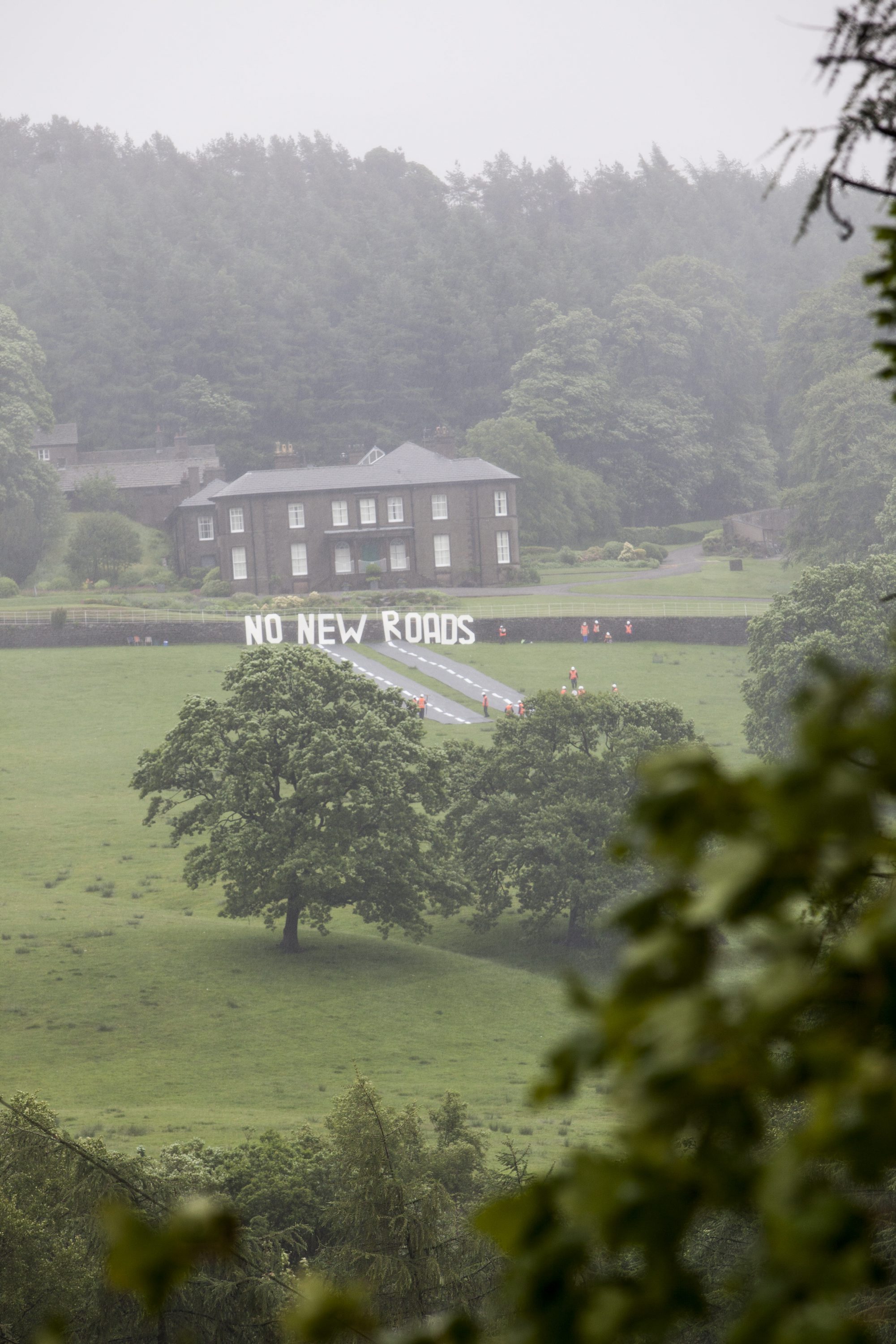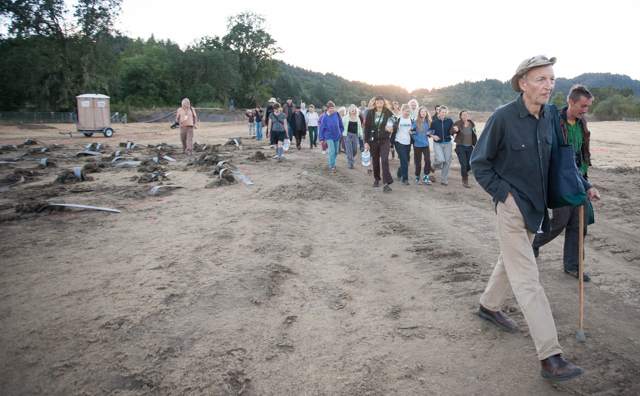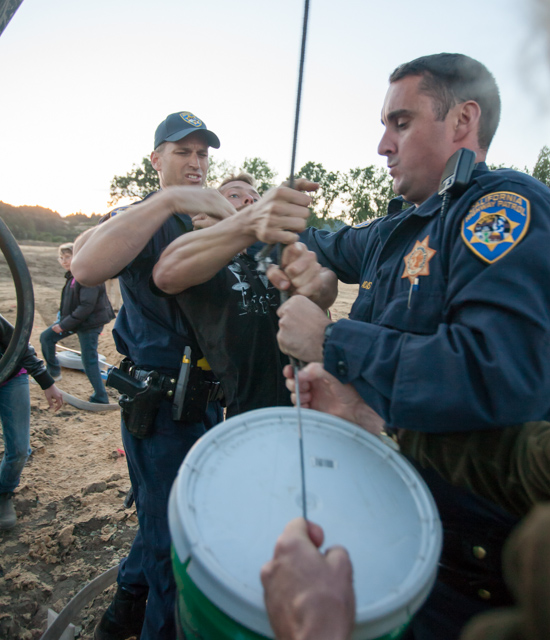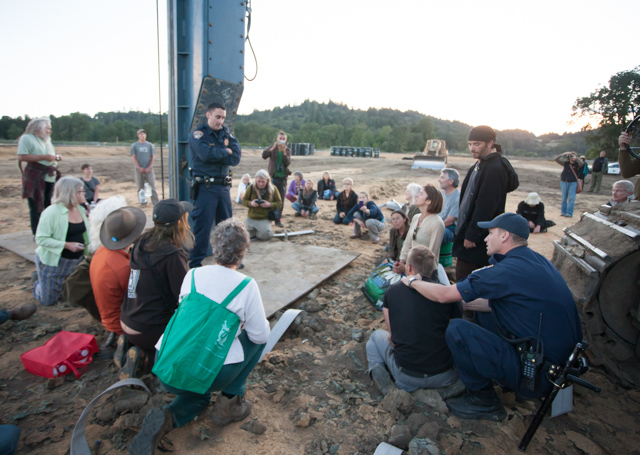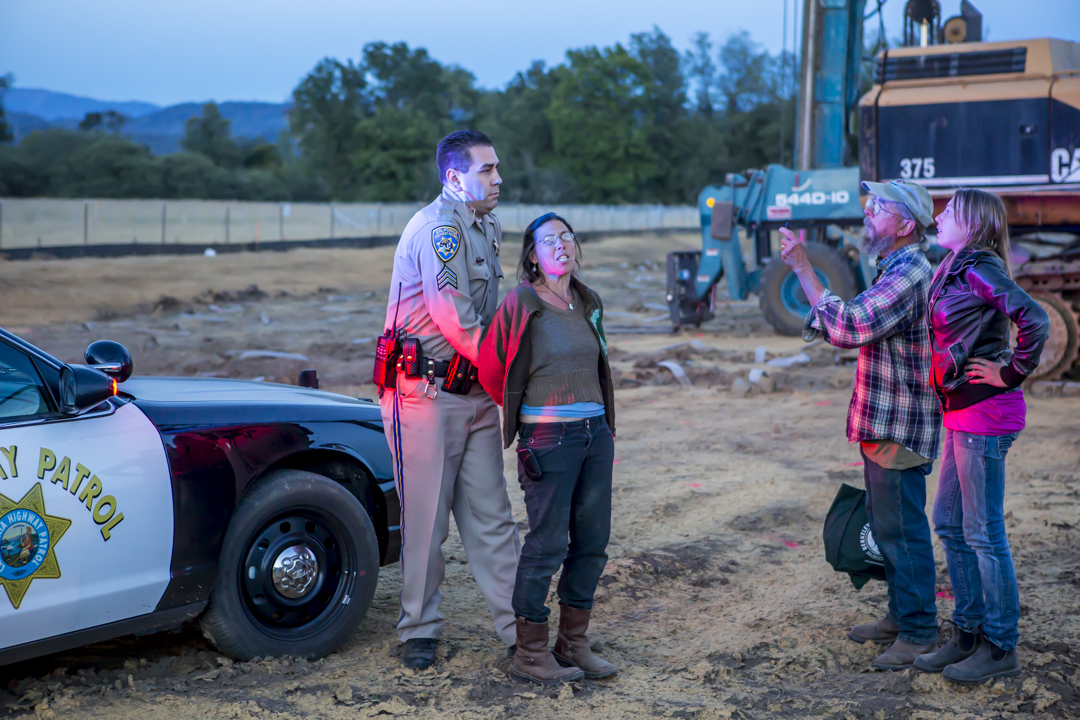21 June 2013, On Friday, May 24, Berta Caceres, the General Coordinator of the Indigenous Lenca organization COPINH, and Tomas Gomez of COPINH’s community radio station, were traveling on rural dirt roads to reach the Indigenous Lenca community of Rio Blanco when they were stopped by 15-20 soldiers. The whole area had been militarized just two weeks before in response to the area-wide mobilization against a hydroelectric dam being illegally built in the Indigenous Lenca community of Rio Blanco. The First Battalion of Engineers, commanded by an SOA graduate, occupied the area to protect the interests of the company and enable dam construction to continue in direct violation of ILO Convention 169 and the will of the communities in the area.
Despite the military’s presence, evictions, sabotage to COPINH’s vehicle, death threats against community leaders, and intimidation, the resistance to the dam continued to grow as the Rio Blanco community neared 2 months of blocking the dam entrance. When Berta and Tomas drove the winding dirt roads to Rio Blanco on May 24, as they had many times before in COPINH’s now well-recognized vehicle, the military was waiting for them. They were on an isolated dirt road, where anything that occurred would be the word of at least 15 soldiers against that of Berta and Tomas. The COPINH leaders were ordered to stop and get out of the car. The soldiers proceeded to search their vehicle in detail, even poking their fingers in the engine, and found nothing. However, that did not matter in their pre-planned operation to criminalize Berta and weaken the struggle against the Agua Zarca dam: they simply claimed to have found a gun and then called the police, who took Berta and Tomas to jail. Berta was arrested and kept in jail overnight, finally being conditionally released after dozens of international phone calls inquiring for her safety. But first, she was charged with “illegally carrying weapons,” a charge that can result in time in prison. Subsequently, she was also charged with attempting against the internal security of the state of Honduras.
Two-time SOA graduate Col. Milton Amaya, the Commander of the First Battalion of Engineers, made accusations about Berta Caceres to the press, resulting in several news articles that claim the well-known social movement leader was illegally armed. This is part of a broader strategy by the military and Honduran oligarchy to criminalize and defame social movements by painting them as armed or operating outside the law.
In the case of COPINH, the criminalization and defamation of Berta Caceres by the military was aimed at breaking the community’s resistance to the hydroelectric dam – thus enabling powerful multinational interests to profit from the Rio Blanco community’s carefully stewarded natural resources. Confidential sources reported that the company felt that by “taking her (Berta) down, the others will break.” In a telling indication of the true motives behind Berta’s arrest, the Honduran daily newspaper El Tiempo reported that Col. Amaya “accused Caceres of rallying the Indigenous population of the area known as Rio Blanco… to reject the construction of the Agua Zarca hydroelectric dam.”
The powerful interests behind the project and their influence in the Honduran government was evident when the prosecutor against Berta was changed from the local office in Santa Barbara to the National Procuraduria General de la Republica, which requested that Berta be imprisoned while awaiting trial. However, what the powers at be didn't count on was the widespread support for Berta Caceres by Honduran social movements and international organizations. On June 13, outside the courthouse where a hearing against Berta held, representatives from over 40 organizations gathered to demand an end to the criminalization of Berta and COPINH. Nobel Peace Prize winner Adolfo Pérez Esquivel held a press conference in Argentina and organizations and individuals from across the Americas contacted the Honduran government and released statements calling for Berta's freedom.
On June 13, the hearing dragged on, with two recesses, the second postponing the resolution to the end of the day. However, those gathered outside the courthouse to demand Berta's freedom refused to leave. It was reported that representatives of the companies building the hydroelectric dam had gone drinking with the judge in the days prior to the hearing, but this time their efforts to sway the easily corruptible Honduran justice system were not enough. There was no evidence against Berta, numerous irregularities in her arrest, and the two soldiers who testified about supposedly finding a weapon contradicted each other several times in their testimony.
In the Honduran judicial system, lack of evidence isn't a problem when there is a political motive for a conviction, but this time it seems the political cost of locking up a widely known and respected leader with support from across the continent was too much. After taking recesses to surely consult with the powers at be, instead of ordering a trial and sending Berta to prison in the meantime, the judge “provisionally dismissed” the charges. Those standing vigil outside the courthouse celebrated the news of Berta's freedom and the failure of the military's efforts to jail her. The provisional part means that the prosecutor has 5 years to present new evidence but is clear to all involved there will be national and international pushback to any attempt to fabricate charges.
However, the powerful interests behind the project are not giving up. Following the court's decision not to jail Berta, there were new death threats against her and other COPINH and community leaders. It is reported that someone was paid to murder Berta this week and there are indications they may try to criminalize other leaders. The First Battalion of Engineers continues to occupy the zone, literally protecting corporate interests rather than the population. COPINH has denounced that soldiers have even driven company machinery to try to custodian the machinery past the Indigenous Lenca community's blockade. On June 11, when many in the community were away for a mobilization, soldiers and police physically destroyed the roadblock. They then attempted to accompany employees of DESA and SINOHYDRO past the blockade but the small group of women and children present refused to let the company in. On June 16, community members report that 150 soldiers and police arrived at the Rio Blanco blockade, several traveling in company vehicles as they often do. Again the community refused to move, refusing to let the company advance in illegally building a dam in their territory.
The Indigenous Lenca communities are up against very powerful interests who want their territory – in violation of their right to the land that has belonged to their community for centuries, which they have carefully stewarded and plan to pass onto their children. One of the principal investors in the dam is the Honduran Bank FICOHSA, whose president is Camilo Atala, is an extremely powerful businessman identified as one of the “intellectual authors and financers of the coup d’etat.” FICOHSA also exercises significant political power because they purchased Honduras’ internal debt after the 2009 military coup. The World Bank and Central American Bank for Economic Integration are also key investors. A Chinese state company, SINOHYDRO, which is the largest hydropower company in the world is working on the project. As Berta Caceres explains, "we are confronting an oligarchic, banking, financial, and transnational power, as well as the State of Honduras itself and its repressive forces, which have historically aligned themselves with the interests of multinational corporations."
The criminalization and militarization faced by COPINH and the Indigenous communities of Rio Blanco takes place in the context of increasing criminalization of Honduran social movements, especially those who are defending their natural resources as the right-wing government ushered in by the military coup literally sells off the country to multinational corporations and the Honduran oligarchy.
Take action: Click here to e-mail the World Bank, the US Embassy in Honduras, and the Honduran authorities, urging them to end the militarization and criminalization of the Rio Blanco struggle and respect for ILO Convention 169 and the right of the Indigenous Lenca communities of Rio Blanco to decide whether or not they want a hydroelectric dam built on their territory.




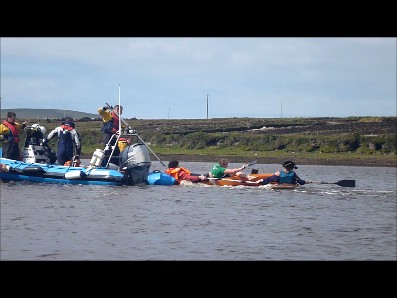



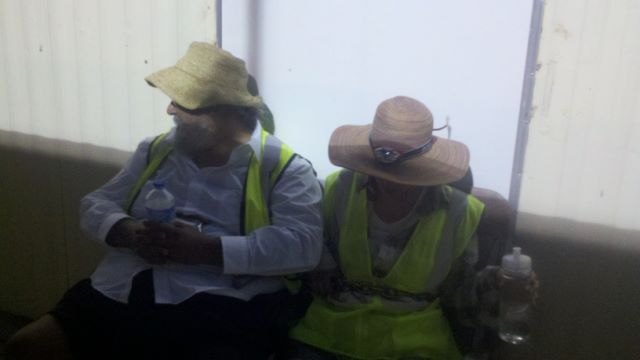

 23 Hune 2013. The second day of the week of action saw an unexpected success when Shell to Sea campaigners managed to breach Shells fortified compound and force security to retreat to the inner compound.
23 Hune 2013. The second day of the week of action saw an unexpected success when Shell to Sea campaigners managed to breach Shells fortified compound and force security to retreat to the inner compound.


